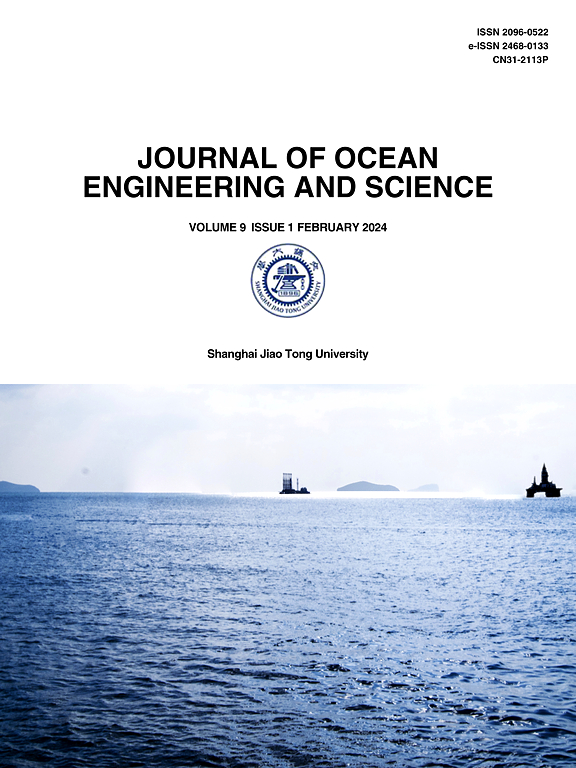Large eddy simulation of plunging solitary wave: Understanding the breaking and turbulent mechanisms along shoaling region
IF 11.8
1区 工程技术
Q1 ENGINEERING, MARINE
引用次数: 0
Abstract
A large eddy simulation (LES) is conducted to investigate the distribution of turbulence kinetic energy (TKE) under a plunging solitary wave over a 1:15 slope. This study provides a novel contribution to the field by examining the roles of resolved and sub-grid scale TKE in plunging solitary waves at the different stages of wave breaking. Furthermore, comparing the performances of two sub-grid scale (SGS) models in simulating the distribution of TKE was carried out to identify their performances. The separate investigation of these components in the context of wave breaking and recognizing the importance of an appropriate sub-grid scale model to consider the effects of small-scale eddies provide a significant advancement in understanding coastal morphological changes and nearshore sediment transport. Both the zero-equation and one-equation SGS models demonstrated acceptable performance in simulating water surface and kinematic properties. The one-equation SGS model, however, provided more accurate results on TKE transport during the breaking process and as the wave approaches its collapsing point. The study’s results reveal that an SGS model’s inability to simulate TKE transport (such as in the zero equation model) leads to inaccurate simulations of the TKE level and breaking location in the breaking zone. Additionally, the results of the one-equation model demonstrated that the maximum horizontal fluid velocity around the wavefront surface is a better predictor of breaking wave onset than the horizontal fluid velocity at the wave crest.
骤降孤立波的大涡模拟:对浅水区破碎和湍流机制的理解
采用大涡模拟的方法研究了1:15陡坡俯冲孤立波下湍流动能的分布。本研究通过研究在波浪破碎的不同阶段,分解和亚网格尺度的TKE在俯冲孤立波中的作用,为该领域提供了新的贡献。在此基础上,比较了两种子网格尺度(SGS)模型在模拟TKE分布时的性能。在波浪破碎的背景下对这些成分进行单独研究,并认识到适当的亚网格尺度模型对考虑小尺度涡流影响的重要性,为理解海岸形态变化和近岸沉积物运输提供了重大进展。零方程和单方程SGS模型在模拟水面和运动特性方面均表现出良好的性能。然而,单方程SGS模型提供了更准确的结果,在破裂过程中,当波浪接近其崩溃点时,TKE输运。研究结果表明,SGS模型无法模拟TKE输运(例如在零方程模型中),导致对TKE水平和破裂区域破裂位置的模拟不准确。此外,单方程模型的结果表明,波前表面附近的最大水平流体速度比波峰处的水平流体速度更能预测破波的发生。
本文章由计算机程序翻译,如有差异,请以英文原文为准。
求助全文
约1分钟内获得全文
求助全文
来源期刊

Journal of Ocean Engineering and Science
Multiple-
CiteScore
11.50
自引率
19.70%
发文量
224
审稿时长
29 days
期刊介绍:
The Journal of Ocean Engineering and Science (JOES) serves as a platform for disseminating original research and advancements in the realm of ocean engineering and science.
JOES encourages the submission of papers covering various aspects of ocean engineering and science.
 求助内容:
求助内容: 应助结果提醒方式:
应助结果提醒方式:


